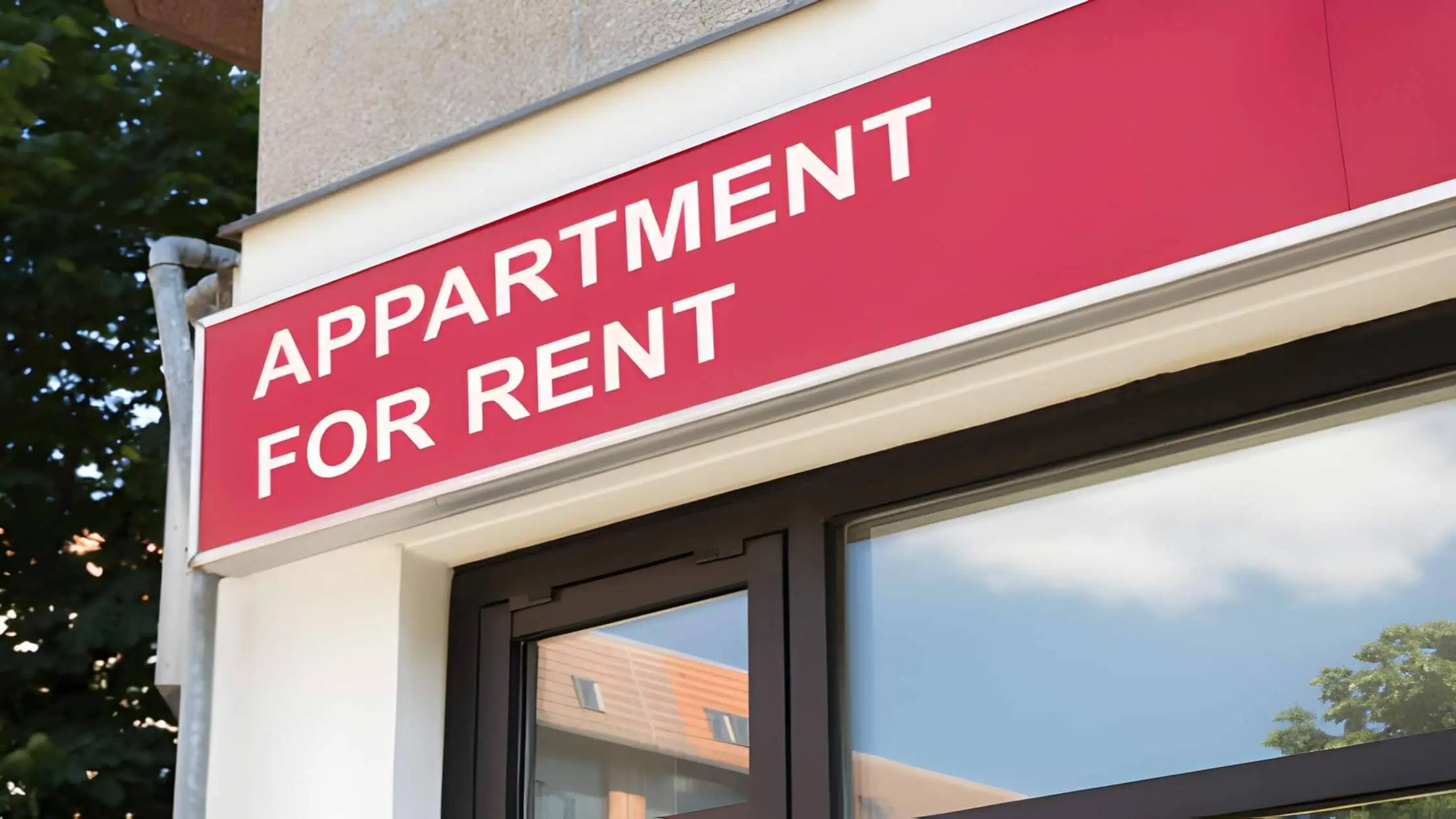Deciding whether you need an apartment rental cosigner is one of the key steps in securing leases for those with low credit, limited income, or no rental history. Landlords and tenants rely on cosigners when financial gaps make approval tough.
For landlords who are renting out a house for the first time, understanding the role of a cosigner is one of the quickest ways to mitigate risk. This guide explains what a cosigner does for an apartment, covers laws, pros and cons, steps in the process, and solutions for complex scenarios.
We highlight practical examples, from students renting their first apartments to landlords managing risk. and show when a lease guarantor vs a cosigner may best fit your needs.

What Is a Cosigner for an Apartment?
A cosigner is a financially stable third party who legally agrees to assume responsibility for all lease obligations (including rent, damages, and fees) if the primary tenant defaults. They might be a parent, friend, or trusted adult with good credit and a steady income. Landlords require cosigners mainly for tenants with poor financial records.
Understanding what a cosigner is on an apartment is vital since this commitment is distinct from a regular applicant, so make sure you understand the difference between a tenant and vs occupant when setting up the lease.
For example, a college student without a regular income might need their parent to cosign. This means the parent is legally responsible; if rent goes unpaid, the landlord can pursue the cosigner for the balance. Some apartments for rent with a cosigner will specifically ask for the cosigner’s information on the application.
When Do You Need a Cosigner?

The need for an apartment rental cosigner arises in several scenarios. Most often, tenants with low income, short credit history, or prior evictions will be asked for one. Landlords use cosigners to fill gaps in financial security. If a background or credit check raises concerns, requesting a cosigner is common.
Students, first-time renters, or someone moving to a new city may need a cosigner. If your rent is more than 30% of your gross income, many landlords will require additional backing. Sometimes multiple cosigners are needed; examples include roommates or siblings sharing a unit.
This raises the question: can you have more than one cosigner? Yes, but it can complicate legal responsibility. This is an important consideration when setting up multiple tenants on a lease, as each party's liability must be clearly defined.
Who Can You Ask to Be Your Apartment Cosigner?

The best cosigner is someone with solid financial stability and a willingness to support you. Most often, this will be a parent, guardian, or relative. Friends can also cosign, but must understand the risk. Employers sometimes cosign for relocating staff.
Always be on the lookout for red flags, as knowing how to spot a rental scam often starts with checking the validity of the financial backing.
When seeking how to find a cosigner for an apartment, it’s vital to consider who has strong credit and low debt. Some ask, can someone cosign an apartment and not live there? Yes, cosigners do not have to live in the rental.
How a Cosigner Works in an Apartment Lease?

It is vital to understand how a cosigner works for an apartment. The process is a detailed legal procedure. It confirms the apartment rental cosigner is financially sound. It also legally binds them to the lease terms.
1. Landlord requests a cosigner
The process starts when a tenant submits their rental application. We, the landlord, review the tenant's profile. If the tenant does not meet our minimum income or credit requirements, we ask for a cosigner. For example, a student with no credit history will likely be asked to find an apartment rental cosigner. This is a common action when we spot red flags in background checks.
2. Cosigner application and credit check
The proposed cosigner must then complete their own application. They submit personal information, ID, and proof of income. They must authorise a full credit check. We must verify their strong financial standing. We need to know they can cover the rent if needed.
The application process is the same as for the primary tenant. This ensures the cosigner is reliable. Before proceeding, remember that the speed of the decision often depends on how long a rental application takes to process, particularly when involving multiple financial checks.
3. Signing the lease or guaranty form
Once approved, the apartment rental cosigner makes a legal commitment. They may sign the lease directly or sign a separate "Guaranty of Lease" form. This document states their obligation. It makes the cosigner legally bound if the tenant defaults. The cosigner does not usually need to be present at the apartment. We make it clear on this form who is guaranteeing payment.
This document is the legal foundation of the agreement, clearly detailing what a guarantor is for an apartment. Therefore, always get a copy of the document you sign. Understand the full term of the lease. This shows exactly how long you are financially responsible. Also, review the document to see if someone can cosign for an apartment and not live there. This is usually the case, but checking is always smart.
4. Financial responsibility once the lease begins
The financial commitment is now active. If the tenant pays rent on time, the apartment rental cosigner takes no action. If the tenant misses a payment, or if they cause $2,000 in damages, they fail to pay, we will contact the cosigner. We have the right to collect from the cosigner.
This includes damages or legal fees. Their personal credit and assets are put at risk. We use professional methods, like the best way to collect rent, to try and resolve the issue. But the cosigner is the last resort.
Pros and Cons for Cosigner, Landlords, and Tenants When Renting

The decision to use an apartment rental cosigner has distinct effects on everyone involved. Each party gains something, but they also take on new risks and responsibilities. Understanding these points is crucial for a successful rental agreement.
For Cosigners
- Pros: The main benefit is helping a loved one secure housing. A parent, for example, can ensure their college student gets a safe apartment. In rare cases, co-signers may share some rental rights, but this is uncommon. Crucially, a qualified person can co-sign for family or friends. The answer to whether a person can cosign for two different people is yes, but this increases their liability dramatically.
- Cons: The biggest drawback is the financial risk. If the tenant fails to pay, the cosigner is fully responsible for all rent and damages. This can lead to severe damage to the cosigner’s credit score. This situation often strains personal relationships.
For Tenants
- Pros: The biggest gain is housing access. An apartment rental cosigner significantly boosts approval odds. This is great for those with little rental history or low income. For instance, a cosigner allows a tenant to get a nicer apartment in a better area.
This might be one of the best apartments for rent with a cosigner available. This means a tenant who earns less than the required amount can still qualify. When completing the necessary paperwork, ensure you know how to show proof of income clearly to support your application.
- Cons: The tenant's responsibility to pay remains primary. The cosigner is only a backup. If the tenant defaults, they risk damaging the cosigner's credit and straining their relationship. This removes some independence.
For Landlords
- Pros: Using an apartment rental cosigner cuts the risk of non-payment. It allows us to approve a broader pool of tenants, such as students or recent graduates. We secure our income stream by requiring a financially strong guarantor. This financial security is invaluable.
- Cons: The administrative work increases. We must screen the tenant and the cosigner. Legal actions can also become more complex. For example, pursuing debt might be harder if the cosigner lives in a different state from the property. Also, if we allow you to have more than one cosigner, managing the liability across multiple parties adds complexity.
Landlords should clearly define the liability in the guaranty agreement. Specify if the cosigner is liable for only rent or also for damages. Tenants should always pay rent on time. This protects their own credit and their cosigner’s financial health.
Risks and Responsibilities for a Cosigner

Serving as an apartment rental cosigner offers great help to a tenant. However, it is a significant legal and financial risk. The cosigner must fully grasp the legal weight of their commitment before signing.
Risks and responsibilities for a cosigner
The core issue is full financial liability. A cosigner is responsible for all unpaid rent, damages, and lease fees. For example, if the tenant skips out on the last three months of a $1,500 lease, the cosigner owes the full $4,500.
We, the landlord, can pursue the cosigner directly for this debt. This answers the critical question of what the responsibility of a cosigner is. They are the financial safety net. A cosigner should carefully review the lease terms. They need to know exactly what they are guaranteeing. They also need to know the entire length of their obligation.
Strained relationships
Co-signing for an apartment can put serious stress on family or friend relationships. Disputes often arise when the tenant defaults. The cosigner may resent having to pay their loved one’s debt. The tenant may feel shame or embarrassment.
For instance, if a parent has to pay a student’s late rent, the family dynamic can suffer long-term damage. This risk is non-financial but very real.
Impact on future credit
Missed rent or any delinquency is reported to credit bureaus. This action will severely hurt the cosigner’s credit score. Even if the tenant pays on time, the debt still appears on the cosigner's credit file. This increases their debt-to-income ratio. To minimize the risk of financial irresponsibility, landlords must conduct a thorough tenant background screening before approval.
This can make it hard for the cosigner to get a loan or mortgage later. Whether a person can cosign for two different people is also a key question here. Cosigning for one person already impacts their financial profile. Taking on a second guaranty makes the impact much worse.
Difficulty in terminating the lease
Exiting a cosigned lease early is tricky. Difficulty in terminating the lease is a major concern, as legally adding someone to a lease is much easier than removing a financial guarantor. Landlords generally will not remove the apartment rental cosigner until the lease term ends. We lose our financial guarantee if we agree to remove them early. The cosigner's obligation is usually locked in.
Request monthly updates. The cosigner should ask the tenant for confirmation of rent payment each month. They should also set a firm agreement up front about how repayment will work if the cosigner ever has to cover the rent. This can protect both the credit and the relationship.
How to Remove a Cosigner from a Lease?
The commitment of an apartment rental cosigner is legally binding. This means removing them before the lease ends is difficult. It requires the landlord's full agreement. Since the cosigner acts as our financial backup, we need a strong reason to let them go. Here are the two main paths to end the liability of your cosigner.
Option 1: Negotiate a Lease Amendment

This option requires the tenant to prove they no longer need the financial support. You are essentially trying to change the existing contract.
Step-by-Step Negotiation:
- Step 1 - Improve Your Financial Standing: First, the tenant must fix the original reason why the apartment rental cosigner was needed. For example, if you originally lacked income, secure a promotion or a higher-paying job. If your credit was poor, spend six months paying down debt to improve your score.
- Step 2 - Gather Evidence: Collect proof of your improved finances. This includes current pay stubs, bank statements, and a new credit report. You must show that you now meet all of our standard tenant qualification requirements on your own. For instance, show you now earn $4,500 per month for a $1,500 rent, meeting our 3:1 income ratio.
- Step 3 - Submit a Formal Request: Write a letter to us, the landlord, or the property manager. Explain that you now qualify independently and formally request the removal of the apartment rental cosigner from the lease.
- Step 4 - Landlord Vetting: We will run new background and credit checks on the tenant. If you pass, we may agree to the removal. During this vetting process, we rely on the answers to key rental application questions to make our final determination.
- Step 5 - Execute the Amendment: If we agree, all three parties—the tenant, the landlord, and the apartment rental cosigner - must sign a lease amendment document. This document legally releases the cosigner from all future financial liability.
Show a history of on-time payments. A perfect six-to-twelve-month payment history is very strong proof that you are now reliable.
Option 2: Wait for Lease Renewal
This is the cleanest and most common way to separate from your apartment rental cosigner. Their liability naturally ends with the lease term.
Step-by-Step Process:
- Step 1 - Maintain Perfect Tenancy: For the entire lease term, ensure you pay rent on time every single month. Avoid any lease violations. The question of whether you can have a co-signer for an apartment for the next term is based on your current performance.
- Step 2 - Request a New Application: About 60 days before the current lease ends, inform us that you plan to renew the lease without the apartment rental cosigner.
- Step 3 - Qualify Solo: Submit a new rental application as a standalone applicant. We will check your credit score and verify your current income again. If your score is high enough and your income meets the required ratio, you qualify. We also conduct an eviction check and contact former landlords using questions to ask tenant references to verify stability.
- Step 4 - Sign the New Lease: If approved, a brand-new lease agreement is prepared. Only the primary tenant signs this new document. The cosigner's obligations formally end when the old lease expires.
Start saving money now. Having a larger savings cushion can also help convince us that you are financially stable enough to rent independently. The cosigner needs to know their liability will end, so keep them informed throughout this renewal process.
Conclusion
The apartment rental cosigner is a key component for secure leasing. It bridges the gap when tenants have low income or weak credit. For example, a recent graduate can now secure their first apartment. This is possible because the cosigner steps up. Landlords gain great financial assurance.
To ensure a secure transaction, the landlord may also charge an application fee for rental processing, which covers the cost of screening both the tenant and the cosigner.
If a tenant defaults on a $1,500 rent payment or causes property damage, the cosigner is legally obligated to pay. This clarifies what a cosigner does for an apartment. Cosigners take on serious liability. They must know their full responsibility for all lease debts. We offer tools to confirm who can cosign a lease. Part of this verification process includes what identity proofing is for all applicants and cosigners.
We also answer whether someone can cosign for an apartment and not live there. LeaseRunner simplifies this process. We help all parties navigate the legal and financial commitment smoothly. This ensures a stable and secure tenancy.
FAQs
What’s the difference between a co-signer and a guarantor?
A lease guarantor vs a cosigner can be confusing. A cosigner may have the right to occupy the unit and is liable from start to finish. A guarantor only pays if the tenant defaults, rarely lives there, and is contacted last.
Can I rent an apartment without a co-signer?
Yes, with strong income, steady work, and positive credit, you may not need a cosigner.
What happens if a tenant or co-signer dies or files for bankruptcy?
Landlords should follow lease language and legal guidance. Often, leases end, but estates may still be liable for unpaid debts.
Can a landlord refuse my co-signer?
Yes, landlords can reject cosigners if their credit, income, or references are not strong enough.
Can a co-signer live in the apartment?
Some cosigners live in the apartment and become co-tenants; others do not. A true cosigner only guarantees payment, while a co-tenant has occupancy rights.
Do you need a co-signer for an apartment?
You only need a co-signer for an apartment if your income, credit, or rental history does not meet the landlord’s requirements. Many renters without a steady income, strong credit, or rental history seek a cosigner for approval. In competitive markets, even qualified applicants may be asked for a cosigner as extra protection for the landlord.
How many co-signers can you have?
You can have more than one cosigner on an apartment lease if the landlord allows it. Some properties permit multiple individual cosigners (such as parents for roommates) while others permit only one. Each cosigner shares legal and financial responsibility. Approval depends on the landlord’s risk policy and local regulations.
Does a co-signer need to be present?
A cosigner usually does not need to be physically present at the lease signing. Many landlords allow cosigners to sign documents electronically or by mail. Requirements vary by landlord or management company, so always check in advance.
Can you have a co-signer for an apartment if you have bad credit?
Yes, apartments for rent with co-signer options are often designed for tenants with bad credit or no credit history. A cosigner with better credit can help you get approved, as they promise to pay if you default.
What is the responsibility of a co-signer?
A cosigner is responsible for any unpaid rent, damages, and fees in the lease if the tenant defaults. This obligation impacts their own credit and finances, as the landlord can pursue collection from the cosigner.
Can a person co-sign for two different people?
Yes, a person can cosign for two or more leases or loans, but each commitment adds risk and increases their debt-to-income ratio. Each landlord or lender may set limits or have stricter requirements for those with multiple obligations.
What rights does a co-signer have on a house compared to an apartment?
A cosigner typically has no right to live in or access the apartment or house unless they are named as a tenant. On a house, a mortgage cosigner is responsible for the loan, but has no property rights unless their name is on the deed. In rental agreements, cosigners are only financially tied to the lease.
Can you find apartments for rent with co-signer options in every city?
Most large and mid-sized cities offer apartments for rent with co-signer acceptance, especially in areas with student or young professional populations. Some private landlords or strict buildings may not accept cosigners, so it pays to ask during your search.
How to find a co-signer for an apartment if you are new to town?
Start by asking family, close friends, or trusted colleagues with strong credit to cosign. If that’s not possible, consider co-signer services or speak with local renter support organizations. Some properties or realtors may recommend guaranteed rental programs for newcomers.







